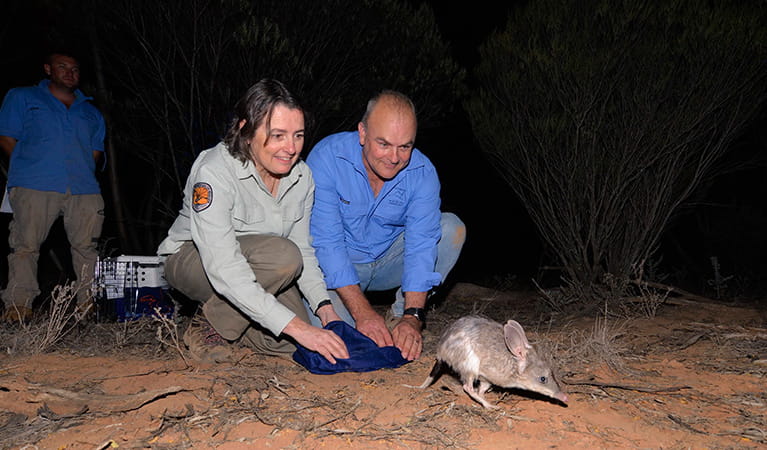Feral predator-free areas project
The feral predator-free areas project is one of the most significant ecological restoration initiatives in New South Wales’ history.
Turning back the tide of extinctions
As part of a ground-breaking conservation strategy, a network of feral predator-free areas is being established on national parks.
Since European settlement, 26 native mammal species have become extinct in NSW and 50-60 per cent of surviving mammals are threatened with extinction. The main driver of native terrestrial mammal extinctions is feral cat and fox predation.
There's strong scientific support for establishing feral predator-free areas using conservation fencing as an essential component of any overall strategy to prevent further extinctions and promote the recovery of our most susceptible species.
The feral predator-free areas project commenced in 2016 with 3 partnership sites in western NSW. It has since expanded to a network of 10 sites, with 7 new areas managed by NSW National Parks and Wildlife Service (NPWS). The aim is to reintroduce native mammal species listed as extinct in NSW and to restore ecosystem function.
Gallery
See some of the native Australian mammals being reintroduced to the network of feral predator-free areas.
World-leading partnerships
NPWS is delivering this project in partnership with Australian Wildlife Conservancy (AWC) and the University of NSW Sydney (UNSW), operating as Wild Deserts.
These world-leading partnerships have seen the return of mammals such as the greater bilby, numbat, and the golden bandicoot. Some reintroduced species have not been seen in the wild in NSW for over 100 years. They are now thriving again in the absence of feral cats and foxes.
These locally extinct mammal species are being reintroduced to:
- Sturt National Park
- Mallee Cliffs National Park
- Pilliga State Conservation Area
The selected project sites support ideal habitat and are located within the former range of the species being reintroduced.
Expanding our feral predator-free areas in NSW
NPWS is now expanding the network of feral predator-free areas with the establishment of 7 new sites:
- Yiraaldiya National Park (formerly Shanes Park) in western Sydney
- Ngambaa Nature Reserve
- Nungatta in South East Forest National Park
- Yathong Nature Reserve
- Mount Uringery in Warrumbungle National Park
- Mutawintji National Park
- Nattai National Park
The 7 new areas will triple the size of the current network of feral predator-free areas on the national park estate, and result in a measurable conservation benefit for at least 50 threatened species. The other 3 sites protect important populations of brush-tailed and yellow-footed rock wallabies.
Together, the network of 10 feral predator-free areas will provide ongoing protection from foxes and feral cats, and other feral animal species such as goats and pigs. Feral animal control efforts outside the fenced areas will help with long-term plans to release these mammals into the wider parks.
Visit the feral predator-free area partnerships project page to find out more.












